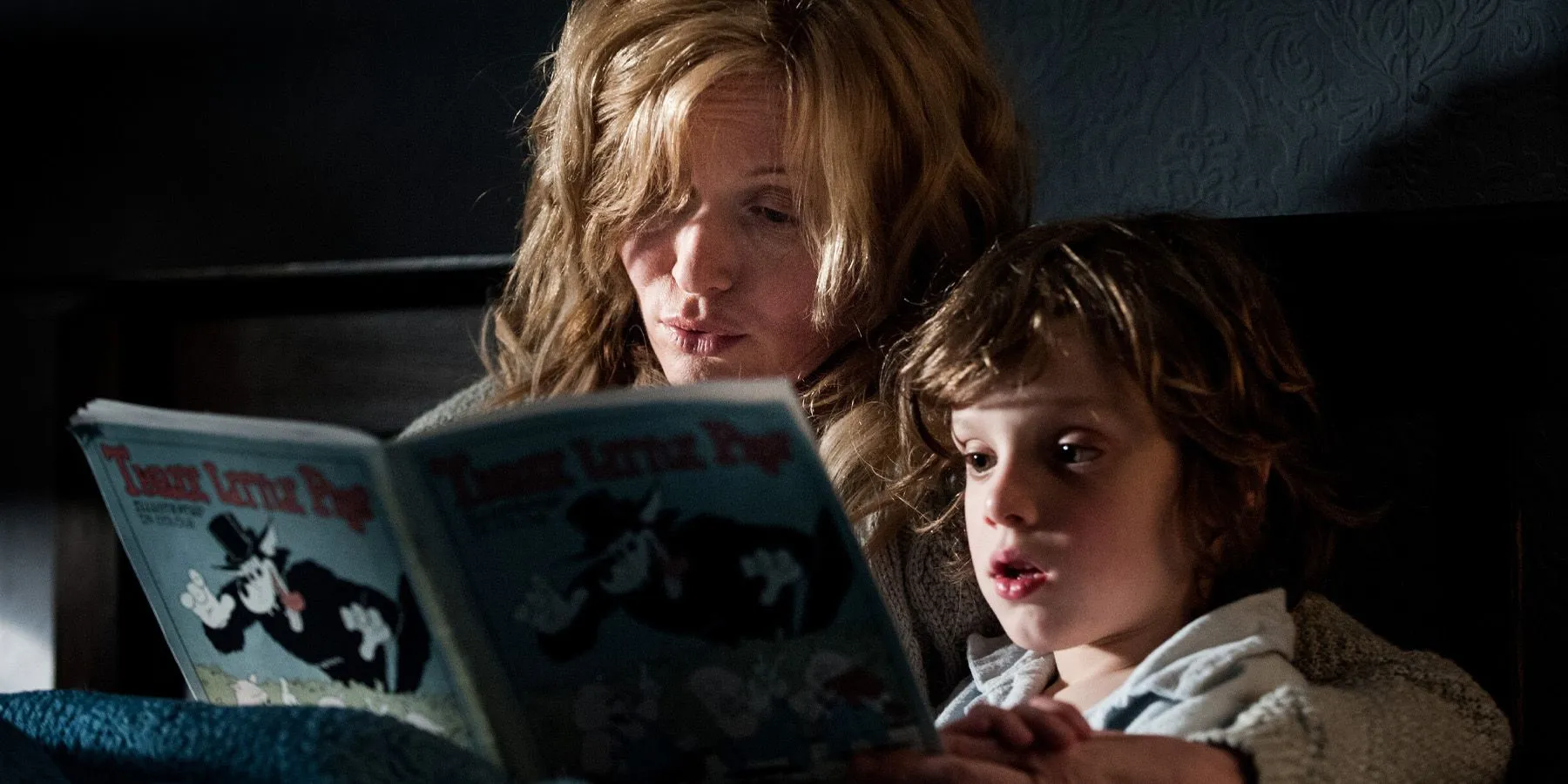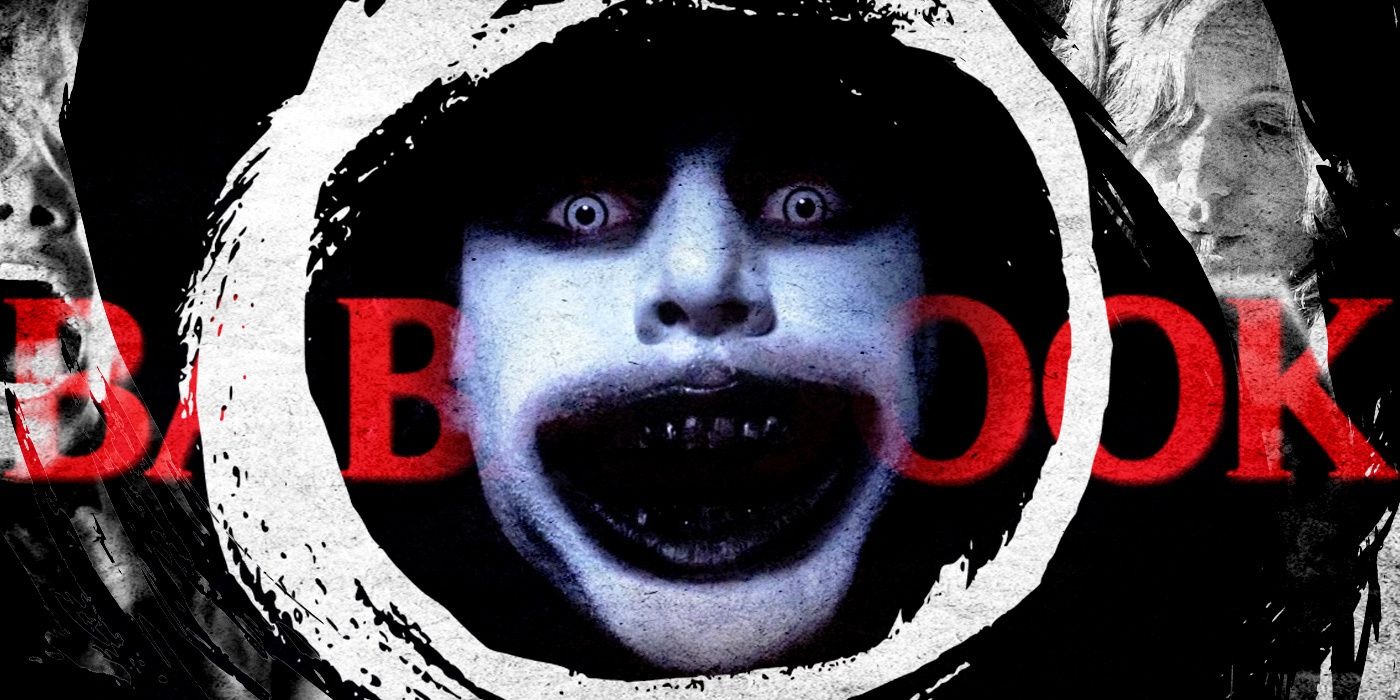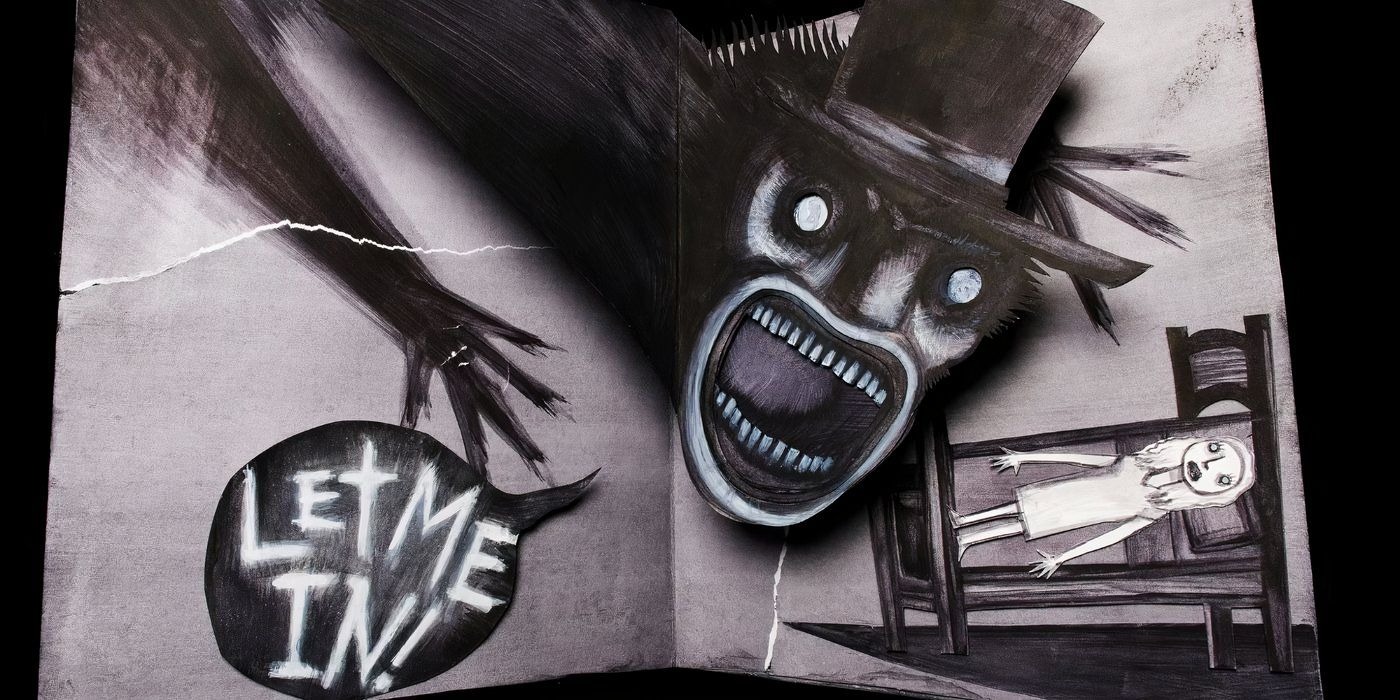The film’s powerful conclusion is drawn from the intense journey that precedes it. After losing her husband, Amelia works a job at a retirement home while also dealing with her son Sam’s troubling emotional and behavioral issues at school.
The daily struggles between them stem from the weight of parenting as a single mother, along with the unresolved trauma caused by her husband’s death. She avoids discussing the incident, even neglecting to celebrate Sam’s birthday on the day itself, due to the painful reminder of his father’s passing.

Things take a darker turn when Sam finds a disturbing children’s book titled “Mister Babadook,” and soon after, the monster from the book begins haunting both mother and child. Despite Amelia’s attempts to dispose of the book, it keeps reappearing, and eventually, the Babadook manifests, tormenting them both.
As the book warns, “You can’t get rid of the Babadook,” and the monster possesses Amelia, pushing her to the brink of insanity, and threatening the lives of both herself and Sam. Sam’s behavior grows increasingly erratic, largely due to his fear of the Babadook.
He becomes violent, even pushing his cousin out of a treehouse. Amelia, unable to resist the monster’s possession, does horrific things, including killing the dog, destroying the phone lines, and trying to poison Sam. The book’s prophecy predicts that she will kill Sam and take her own life afterward.
By the film’s climax, Sam must restrain his mother in the basement and expel the Babadook from her. However, the monster doesn’t die, highlighting the inescapable truth: the Babadook cannot be destroyed. After the monster is expelled, the mother and son lock it in the basement.
The film jumps forward several months to Sam’s birthday, which is now celebrated on the actual day. Amelia goes down to the basement to feed the Babadook, showing her gradual acceptance of the fact that she must tend to the monster’s presence.
Although she recoils in fear as it emerges from the shadows to eat, she maintains control over her emotions. When her sister asks how things were, Amelia simply replies that the day was quiet, implying that while managing her emotions remains difficult, she has finally learned to live with them.
Ignoring the Babadook Only Gives It More Power
Monsters and ghosts in stories often symbolize unaddressed traumas, and the Babadook is no exception. It represents the shared grief and trauma that Amelia and Sam endure from the loss of Oskar.
The monster wears a suit similar to Oskar’s, and near the end of the film, it even takes on his appearance in a desperate attempt to convince Amelia to give up her son. The monster is also confined to the basement, a place where Amelia keeps her late husband’s possessions.
Early in the story, she discourages Sam from playing in the basement, as it forces him to confront memories of his father. Throughout the film, Amelia tries to move on from the grief, even avoiding any recognition of it by shifting Sam’s birthday celebrations each year to a different date, sharing it with his cousin.
However, the more Amelia tries to avoid the grief, the worse things get. Sam insists that the monster is real and needs protection, but Amelia disregards him or tells him to stop making up stories. She even attempts to burn the book, only for it to reappear, further proving that ignoring the trauma only makes it stronger.
She tries giving Sam sleeping pills in hopes of managing the situation, but it proves ineffective. As the monster continues to haunt them, its power grows stronger, and the situation becomes more dangerous.
The book warns that ignoring the Babadook will lead to their deaths, and although they fail to kill it multiple times, they finally learn that facing it directly and confining it to its physical form, is the only way to regain control over their trauma.
‘The Babadook’ Ending Represents How to Handle Emotional Trauma
For Amelia and Sam to heal, they must face the Babadook together. While some may argue that, as a mother, it is Amelia’s job to protect her son and ensure his happiness, the film shows that Amelia cannot defeat the monster on her own. Instead, she and Sam must collaborate to confront their trauma.
The pivotal part of the ending is that the Babadook must remain in the basement, where it is fed and looked after daily. Though this process is uncomfortable, it’s far less terrifying than when the monsters had free rein in their lives.
The film emphasizes that, just like real life, trauma cannot be ignored and expected to disappear. When one tries to repress their pain, it only grows into something more dangerous. The healing process from trauma is never immediate.
It requires consistent emotional and mental work, just as Amelia and Sam must regularly tend to the Babadook. The Babadook serves as a warning about the dangers of stuffing emotions deep within, as that is where they grow uncontrollably and begin to dominate one’s life.
Is The Babadook Real or All in Amelia’s Head?
Some viewers interpret the Babadook as purely a product of Amelia’s mind, suggesting that her depression and trauma led her to create the monster in a moment of breakdown.
Evidence for this theory includes Amelia’s past as a writer of children’s books, the fact that no one else besides her and Sam sees the Babadook, and how supernatural events, such as the reappearance of the book, could be viewed as hallucinations.

However, the theory falls short when one considers the implications of such an interpretation. If the Babadook is only a figment of Amelia’s imagination, then her mental health issues would remain unresolved, which could be dangerous, even though the film appears to show her triumphing over them.
Having the Babadook as a tangible entity broadens its meaning. It’s not just a mental condition specific to Amelia, but a representation of trauma that anyone can face. Externalizing the trauma into a literal monster gives the film its deeper importance.
Jennifer Kent, the film’s director, explained that the movie is about Amelia’s journey of confronting something terrifying and learning to face her suppressed emotions. If the Babadook were purely a delusion, then it would not serve as an external manifestation of her trauma.
The film is clear in its metaphorical purpose, and diminishing the Babadook to a mere psychological illusion would weaken the story’s impact. The ending of The Babadook offers a cautiously optimistic view of Amelia and Sam.
Sam is becoming more social, and Amelia is reconnecting with her sister, possibly even beginning a new romantic relationship. While they haven’t completely healed from their trauma, they are learning to manage it.
The Babadook remains in their basement, a constant reminder of their pain, but the task of dealing with it is becoming less consuming. They will never fully forget Oskar’s death, and the Babadook may always need some care.
However, over time, the work required to keep it contained might become easier, symbolizing how people can live with their past traumas without allowing them to control their lives.



